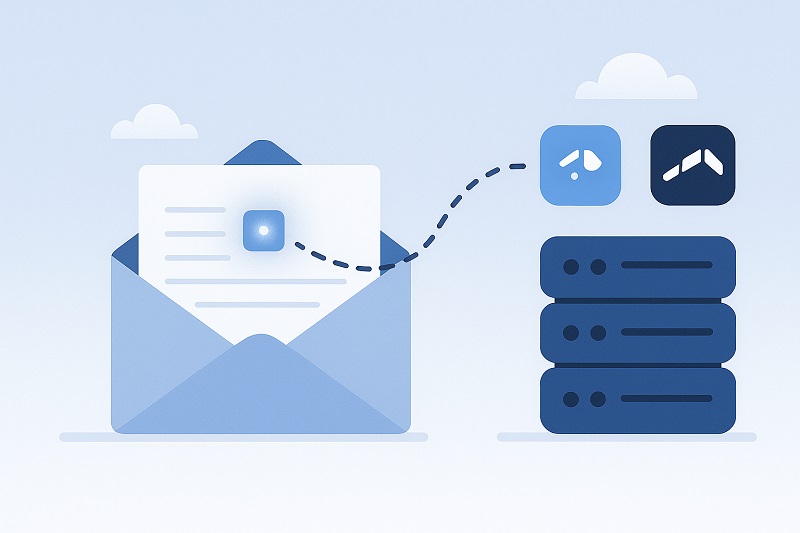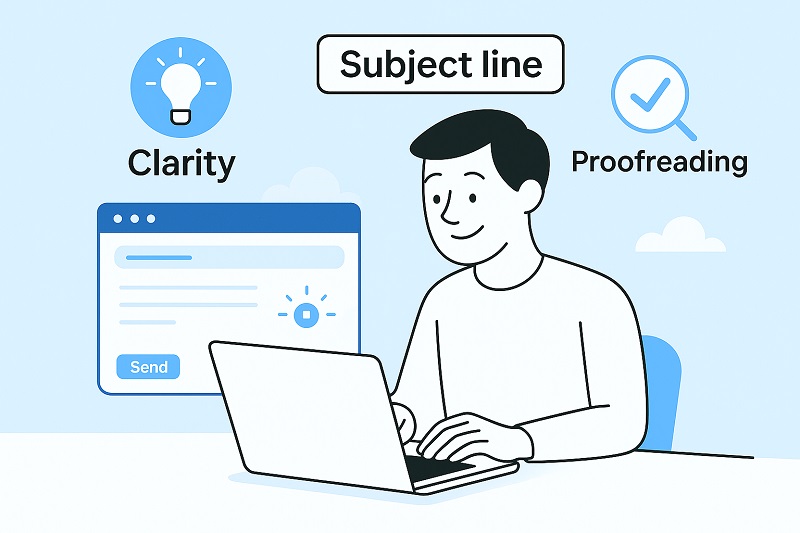Have you ever sent an important email and then found yourself anxiously waiting, wondering if the other person actually opened or read it? From job applications and business pitches to something personal, that feeling of being left in the dark is frustrating at the best of times. The good news? There are simple ways to find out if your email was truly seen.
We’ll explore how you can get a clear picture of what happens after you hit send.
Key Takeaways:
- Use Gmail read receipts or email tracking extensions to see if someone read your email and get open notifications.
- Tracking helps you time follow-ups effectively and measure engagement, ensuring your emails reach and connect with more recipients.
What is a Read Receipt?
A read receipt is a notification that shows when someone opens your email.
But it’s important to remember that not every email system supports this feature. And even when it does, the recipient’s privacy settings might block it. It’s not a guaranteed method, but it is a good start.
Requesting Read Receipts in Gmail
If you have a Gmail account, especially a Google Workspace account, you can easily request a read receipt. This feature only works for Google Workspace Users and not for regular personal Gmail accounts.
This is how to set it up:
- Open Gmail on your laptop or desktop and click “Compose” to start a new email.
- Write your message and fill in the subject line and recipient.
- At the bottom right of the compose window, click on the three dots. This is the “More Options” button.
- Select “Request read receipt.”
- Click “Send.”
When the intended recipient opens your email, you’ll receive a message confirming that they have viewed it. But it only works if both the sender and the recipient use compatible systems and the recipient agrees to send a read receipt. Remember, not everyone chooses to confirm.
![]()
Email Tracking Tools and Extensions
If you have a personal Gmail account, you don’t have the built-in “Request read receipt” option. Google limits that feature to Google Workspace accounts for privacy reasons, but there are a few other ways to track emails:
- Mailtrack: Mailtrack is one of the simplest and most popular free email trackers. Once you install it, it works right inside your Gmail account. When you send an email, Mailtrack adds small double checkmarks next to it. One checkmark means the email was sent, and two means the recipient opened your email. You can also see when and how many times it was opened or viewed.
- HubSpot Email Tracking: This tool is part of a larger email automation software platform that not only tracks opens but also shows you when someone clicks a link in your email. You’ll get notifications in real time, so you’ll know the moment someone checks your message. HubSpot works well for businesses that want to improve their email outreach, too.
- Boomerang for Gmail: Boomerang helps you stay organized by combining tracking and scheduling. You can set it up to remind you to follow up if someone doesn’t reply, or to schedule emails to send later. It’s the best way to keep track of those important messages.
- Streak for Gmail: Streak turns your email inbox into a simple CRM that helps you track conversations, manage sales leads, and monitor email open rates. If you’re a freelancer who wants to keep track of your contacts and communications, this one’s for you.
Before using trackers, it’s smart to improve your sender reputation so your emails consistently reach inboxes.
How Email Tracking Really Works
Most email tracking systems use something called a tracking pixel. It’s a tiny, invisible image that’s added to your message when you send it. You can’t see it, and it doesn’t change how your email looks, but it’s hidden in the background using a small HTML image tag.
When the recipient opens your email, that little image that’s often just one pixel in size loads from the tracking server. When it does, it quietly sends a signal back to you, the sender, to let you know your email was opened.
It can even record the time it was opened and, in some cases, the type of device used to read the email. Some advanced tools go even further, tracking link clicks and how long the recipient kept the email open.
This process is called open tracking. It’s a smart system, but it’s not perfect. Some email clients and email providers block tracking pixels to protect recipient privacy. They might prevent images from loading automatically, which stops the pixel from sending that signal. In that case, you won’t get an open notification even if the person did read your email.
Want to make sure your emails actually reach the inbox before you even worry about tracking? Try InboxAlly to improve your sender reputation and inbox placement.
Email tracking gives you helpful insights, yes, but it isn’t 100% reliable. You should think of it as a handy guide rather than an exact science.
Privacy Concerns with Tracking
Tracking can be very helpful, but you must also consider the privacy and compliance concerns. Some users block tracking pixels, and privacy-focused email providers like ProtonMail and Tutanota prevent image loading completely.
If you send bulk messages, make sure you follow bulk email best practices to maintain trust and stay compliant with privacy regulations.
If you’re sending personal messages, always ask yourself if tracking is really necessary; it’s best reserved for business or professional use.
Paid Vs. Free Tracking Apps
Most tracking tools have free versions for basic open notifications and paid ones for advanced analytics.
Before investing in paid tracking, make sure your email list is clean and healthy. Learn how to clean your email list to reduce bounce rates and keep your sender reputation strong.
Paid plans usually include:
- More detailed analytics
- Integration with CRMs or email automation tools
- The ability to track many recipients at one time
- Reports on click rates and conversion rates
Tracking and Good Email Habits
Even if you use email tracking, good writing matters most.
Start with a clear and short subject line. The subject line is the first thing people see, so make it simple, relevant, and direct. Stick to short words like “Meeting Update” or “Important Questions” to make it clear you need feedback. A vague title will quickly lead to your email being ignored.
Keep your message polite and to the point. People are busy, so avoid writing long paragraphs and rather say what you need in a few short sentences. Always end with a question or action. This gives the recipient a reason to reply. Ask something like, “Does that work for you?” or “ Can you let me know by Friday?”
Before you click send, re-read your email and double-check your spelling, names, and details. Mistakes only make your email look rushed and careless. Tracking tools might tell you if someone opened your email, but good email habits get better results.
Take your good habits further, use InboxAlly’s Free Email Tester to see how inbox-friendly your message really is.
Conclusion
Whether you’re using Gmail read receipts, email tracking tools, or email automation software, you can now know when someone opens your emails.
Tracking can tell you when an email was opened, how many times it was viewed, and if anyone clicked the links within your email. But it’s important to use tracking tools wisely and always think about the recipient’s privacy.
If you’re ready to improve your email deliverability and open rates, explore InboxAlly’s Plans & Pricing and start landing more emails in the inbox.
About the Author
*Darren Blumenfeld is the CEO and Founder of InboxAlly, an email deliverability platform trusted by growth-focused marketers. He’s previously founded HonestMail, worked at NASA, and holds degrees from Tufts and Columbia. His passion for tech, education, and creativity continues to inspire innovation in email outreach.*


